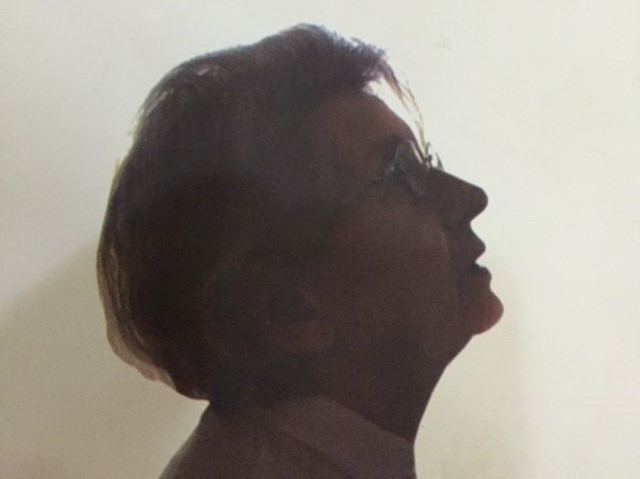"A European in the Land of the Kurds" is the title of a book written by Nasrin Ghassemlou, the wife of Dr. Abdulrahman Ghassemlou, translated into Kurdish by Ms. Nahid Hosseini.
For several reasons, this book is worthy of consideration by Kurdish and European readers. In this article, I will try to present two reasons why this book is important. In the first part, I will discuss a factor called the "clash of cultures"; in the second part, I will discuss "the life of a European in Eastern politics".
That book is written in an interesting way. Although the author has written her own autobiography, the writing is more like a novel in terms of form. The author has deleted her name and made the narrator of her life a third person and tells the stories from the perspective of a third person or an omnipresent perspective. The character who tells the biography is herself, but she named her Lina to capture the novel form.
That is, the narrator tells the events of the life of a character named Lina. Lina is the author and narrator of the story.
The most important part of the book, which is important in cultural sociology, is that a Western writer/person with a special education, morality, and worldview of the Western world turns to the Middle East and Kurdistan.
The author's narrative is important because she stays in the Kurdish nation and in Kurdistan for a long time. She feels what she sees and what happens up close. She tried to integrate into the society. Participate in their events and ceremonies and affirm their cultural details. This form of work is known in sociology as "nation writing" or "people writing. That is the approach taken by sociologists in the 20th century to know other cultures. It means, that instead of relying only on written sources to get to know a nation and people, they went and lived with those people for a while to learn the details of their lives, thoughts, beliefs, works, and actions. What Nasrin Ghassemlou tells us in her book is exactly the way that ethnographic sociologists have described it.
She first went to Tehran and stayed with her husband, Dr. Ghassemlou. During her secret life in Tehran, she constantly studied the behavior, language, and lifestyle of the people of the city and gained good information. However, after going to Kurdistan and visiting Urmia via Tabriz and the life of Dr. Ghassemlou and his family, the eyes of Nasrin Ghassemlou or the narrator of the book are more precise. Immediately, she describes a new country she has entered and compares it with other parts of Iran and Europe. What the author tells us about the trip shows the extremely undeveloped economy of the region. It shows that the central government has not paid any attention to the development of the region and has not observed any principles of prosperity in the region. Descriptions of roads, roadside accommodations, and comparisons with other places confirm that fact.

But the author's writing does not end there. When she reaches the village where the Ghassemlou family, led by Mohammad Khan Ghassemlou or Wasuq Khan, lives, her descriptions take on another significance. First of all, the author is about to join one of the most famous and wealthy families in the East part of Kurdistan. Second, she belonged to the family of one of the most famous and powerful nobles in the east part of Kurdistan. Third, she belongs to the family of one of the greatest politicians in eastern Kurdistan. For these reasons, we can say that every sentence that the author writes during her stay in that house is important for the Kurds of the East part of Kurdistan, for sociological researchers in the East part of Kurdistan, and political enthusiasts in Kurdistan.
Nasrin Ghassemlou's narrative in her book about the family life of one of the largest houses in Kurdistan reveals the details of the life and institutions of the family. Then, the reader is no longer reading just a story in which the storyteller has imagined the life of a house, but the story of a woman who has become part of that large house and has seen its life with all its joys and sorrows.
On the other hand, the author does not stay within the house and travels outside and inside the poor people and compares the two different types of life through her words.
The third aspect is the family life of a great political leader of the Eastern Kurds. No source on Dr. Abdulrahman Ghassemlou's political and ordinary life is as detailed as this book. The author of the book showed people and readers Abdulrahman Ghassemlou whom she fell in love with. She lived with him. She studied with him, became a university professor in Prague with him, displaced with him, tried a secret life with him, and eventually helped him in the revolutionary process. The book shows how a European, after understanding the Kurdish problem and its misery, joined the Kurdish revolutionaries with all her heart and soul and fought for the legitimate rights of a subjugated nation, and participated in the most dangerous processes. She has been prosecuted by the SAVAK intelligence agency and the head of this inhuman and dangerous system. She was displaced from city to city in the East and South parts of Kurdistan with her little children. She was forced to serve the revolutionaries of the secret work in the city and help the revolutionaries in the mountains of Kurdistan for hundreds of days. Overall, the book is worthy of study, reading, and learning, both for Kurdish and European readers because it was written by a European who loves the Kurds and their wounds.








